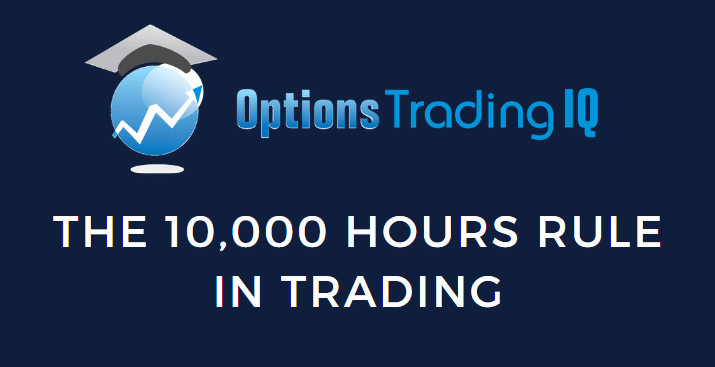

The 10000 hours rule states that it takes about 10,000 hours of intensive study and practice in order to master complex skills such as playing the piano, flying an airplane, playing chess, and of course, trading the markets.
Contents
Introduction
Malcolm Gladwell’s book “Outliers” popularised this rule.
The rule, which was published in 2008, drew some criticism because it was oversimplified or misinterpreted.
Gladwell did not mean to say that if you spend 10,000 hours, you will succeed.
Just an example, if I am only 5 foot 3 inches tall and have poor motor skills, I’m not likely to be a pro-NBA basketball player, even if I spend 20,000 hours shooting hoops.
He only meant that if you see a master at his or her craft, it is not likely that they were born with that ability.
They likely spent at least 10,000 honing their craft to get to that level.
If you look at it in this light, the rule makes sense.
Since trading is a craft, performance increases with experience.
How much experience do you need to get good at trading?
How about 10,000 hours?
That sounds like a good number.
Consider that you spend 40 hours a week in a full-time job.
It would take you 250 weeks to accumulate 10,000 hours.
There are only 52 weeks in a year, which equates to 4.8 years.
To become a master, you have to work and study full-time for almost five years.
That’s quite a large number.
Probably more than what most new traders would expect.
Some expect (unrealistically) to be profitable right away.
The question is whether this 10,000 hour number is accurate.
Does it really take five years to become successful at trading?
Let’s see what we can find on the internet.
How Long Does It Take To Become Profitable In Trading?
Well-known day trader Oliver Velez says it is different for everyone.
Some people are more naturally disciplined than others.
Some people are more emotional, etc.
But nevertheless, it will take time.
It is not going to happen overnight.
It took him six years to reach consistency.
Al Brooks says it took him ten years of losing money before becoming profitable
Trader Nick says he traded on a demo account for six months and took two years of constant study and constant work to become consistently profitable.
The day trader, Humbled Trader on YouTube, took two to three years to become profitable.
As you can see, some took longer than five years.
Some took less.
Perhaps 4.8 years (or 10,000 hours) is not an unrealistic number.
This is assuming a full-time practice.
If one is doing it only part-time, then it may even take longer.
This is not to discourage you from trying.
Obviously, I’m not saying this is true for everyone.
Each individual has a different natural ability to start with and different levels of dedication.
Perhaps you may be among those who can do it in less time.
The learning process can be reduced to a certain extent if one is provided with proper training and mentoring instead of stumbling through trial and error.
What cannot be short cut is experience.
A certain level of screen time and hands-on experience is required regardless of the training received.
I don’t care how many cooking videos you watch on making chicken parmesan.
You are not going to be a chef if you don’t step into the kitchen.

Experience Matters
I liked what John Locke said in a YouTube webinar.
He is the creator of the M3 and the Rock and other butterfly options strategies.
He said:
“I went ahead and just started trading them [butterflies and bull puts] — hundreds of them. I did very very small trades. And I didn’t care if I made money or lost. Because that’s the way you learn. You don’t care if you make money or lose. You do these hundreds of trades, after trades, after trades. I just wanted to learn as much as I could, as quickly as possible. And to gain the experience. Ultimately in any field, you need to gain the experience in order to do well.”
source: YouTube video
This, I think, is a very good way to learn.
You can gain experience in a demo account (like what Trader Nick did).
Or you can gain experience by trading very small amounts.
But whatever you do, try to gain the experience as quickly as possible before deploying full capital at the markets.
Options trader and educator Dave Thomas said that his son and daughter both back-traded ten years’ worth of historical data in order to gain experience before deploying live capital.
Many people trade in sizes that are too large for their experience level.
That is what blows up an account and gives credence to the statistics that most first-year traders are not profitable.
FAQs
How can we gain the experience that we need?
For day traders and Forex traders, there are many simulators out there.
Since most of the audience here are options traders, you can back-trade using historical data with OptionNet Explorer or OptionVue.
You can also forward-trade in near real-time (15 minutes delayed data) using TD Ameritrade’s ThinkOrSwim platform in “paper trading” mode.
How realistic are these simulators?
I have tried Paper Mode in ThinkOrSwim, and the fills that they give me are overly optimistic. I would not get the same kind of fills in live markets. Nevertheless, these simulators are good for getting the mechanics down.
In general, most traders will do better in simulators than in live markets.
The real practice starts when you go to the real markets with a small size account.
Summary
The 10,000 hours rule needs to be taken with a grain of salt.
Gladwell says this is the magic number of hours for mastery.
But what defines mastery?
Perhaps that is someone at the very top, beyond just being “consistently profitable.”
If that is the case, then it is certainly possible for some traders to become consistently profitable without accumulating 10,000 hours.
I have seen such occurrences.
Whether you believe in the 10,000 hours rule or not, nothing trumps experience and practice.
So go out there and trade safely.
We hope you enjoyed this article on the 10000 hours rule.
If you have any questions, please send an email or leave a comment below.
Trade safe!
Disclaimer: The information above is for educational purposes only and should not be treated as investment advice. The strategy presented would not be suitable for investors who are not familiar with exchange traded options. Any readers interested in this strategy should do their own research and seek advice from a licensed financial adviser.











For beginners: Don’t get bogged down with multiple strategies. Choose one strategy ( For instance – selling vertical spreads) and learn all you can about it. Paper-trade on thinkorswim. Then, when you are completely comfortable opening trades, closing trades and adjusting trades start live.
Thanks you Gavin!